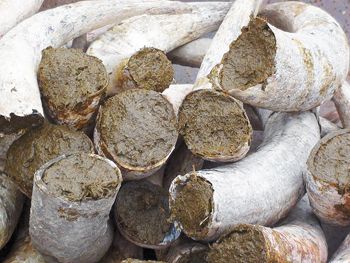Green Defined

What is the difference in organic farming and Biodynamic practices in the vineyard?” - Andy (Salem)
Rest assured, you are not alone in trying to understand the difference. To start, most organically grown wines cannot be considered organically made. For a wine to be labeled organic, winemakers must relinquish sulfites, an important tool in their process.
Sulfites are naturally occurring in all wine but are also added in small amounts to help stabilize and protect it as it ages. This addition is what keeps wines that are otherwise made organically from being labeled as such.
In grapegrowing, there are several methods that reduce the use of chemical sprays and encourage conscientious use of land. Those practices help to define the differences.
The first is sustainable viticulture. In the Pacific Northwest, LIVE (Low Impact Viticulture and Enology) provides certification and helps set sustainable standards. The goal of LIVE is to supply a platform for conscious winemaking and grapegrowing as well as provide a resource for consumers. Put simply, sustainable viticulture relates to a longterm agricultural commitment to the health of the land, the products that come from it and the people who consume them.
The next step is to be certified organic. To do this, vineyards must go through three years of rigorous, sometimes financially imposing routines and inspections. Because of these restrictions, many businesses, while incorporating organic farming applications, do not certify themselves as such. Eliminating the use of pesticides and herbicides is one example of organic practices.
Biodynamic viticulture brings it all up a notch. Biodynamic farmers take cues from the cycles of the moon and planets, engaging in certain vineyard practices on specific days as prescribed by a yearly calendar, not unlike the Farmers’ Almanac. Biodynamics can be traced back to philosopher and social reformer Rudolf Steiner, who devised a doctrine on farming highlighting the need to understand not just the ecological aspects of farming but also its energetic and spiritual ones.
For a wine to be labeled Biodynamic, it has to meet the stringent standards established by the internationally recognized certifying body, Demeter Association. Along with other organic regulations, winegrowers must also incorporate nine Biodynamic preparations including the use of cow manure, ground quartz, yarrow flowers, chamomile, stinging nettles, oak bark and dandelion flowers, which are treated and usually turned into a spray for the vineyard to be applied at certain times during the life cycle of the vines.
True believers in biodynamic farming claim a pronounced difference in the quality of the wines, noting more vibrant flavor and a clearer expression of its terroir. In addition, proponents also highlight improvements to vineyard health. Yet, there is still much debate on the efficacy and quality difference between Biodynamic vines and more conventionally grown ones; and a healthy percentage of professionals and wine drinkers have yet to be convinced.
For more on Biodynamics, I suggest you read Katherine Cole’s book, “Voodoo Vintners.” Also, Alice Feiring’s recent book, “Naked Wine” discusses low- to no-intervention winemaking and grapegrowing, highlighting some of the Northwest’s sustainable and organic wineries.
Cheers to “green” wine! Jenni Cossey
I look forward to receiving more of your questions. Email me at jcossey@oregonwinepress.com to submit your questions and I’ll see you next month!







